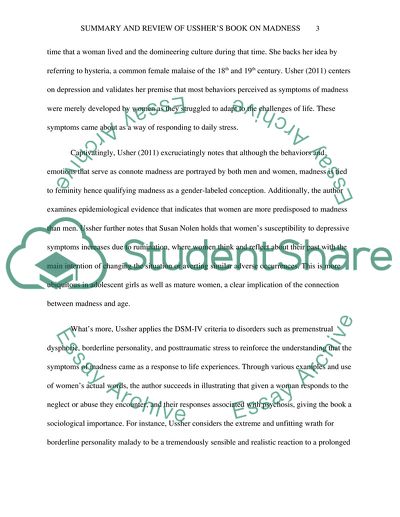Cite this document
(Analysis of Ussher's Book The Madness of Women: Myth and Experience Report/Review, n.d.)
Analysis of Ussher's Book The Madness of Women: Myth and Experience Report/Review. Retrieved from https://studentshare.org/sociology/1881344-topic-of-book-provided
Analysis of Ussher's Book The Madness of Women: Myth and Experience Report/Review. Retrieved from https://studentshare.org/sociology/1881344-topic-of-book-provided
(Analysis of Ussher'S Book The Madness of Women: Myth and Experience Report/Review)
Analysis of Ussher'S Book The Madness of Women: Myth and Experience Report/Review. https://studentshare.org/sociology/1881344-topic-of-book-provided.
Analysis of Ussher'S Book The Madness of Women: Myth and Experience Report/Review. https://studentshare.org/sociology/1881344-topic-of-book-provided.
“Analysis of Ussher'S Book The Madness of Women: Myth and Experience Report/Review”, n.d. https://studentshare.org/sociology/1881344-topic-of-book-provided.


